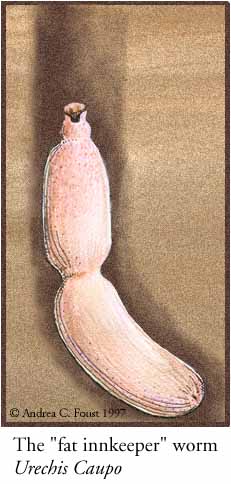The pudgy "fat innkeeper" worm Urechis
caupo, which looks more like a frankfurter than a worm, tunnels through
the salty mudflats of Elkhorn Slough, California. It collects food by spinning
a sinewy, mucous net. But the muddy cocktail trapped within the net contains
more than lunch: within lies a virtual potpourri of chemical toxins, some
natural and some man-made, that aren't meant to be eaten. Yet as soon as
the poisons find their way into the marine worm's belly, they are spit back
out into the mire.
At a nearby hospital, a breast cancer patient is losing her battle against
cancer because the tenaciously dividing cancer cells in her body are using
the same molecular gadgetry to jettison chemotherapy drugs back into her
bloodstream, preventing them from attacking her tumor.
The fates of the worm and the woman are linked by a sub-microscopic pumping
mechanism. A protein called a "multidrug resistance," or MDR pump,
is nature's common currency here. Embedded within a cell's membrane, this
protein protects a cell by ejecting a variety of molecules in many
cases, toxins on contact. The cell might be a bacterium, in which
case the "toxins" are antibiotics. With cancer cells, the "poisons"
are chemotherapy drugs. MDR pumps are being discovered in almost every organism
searched, including Urechis caupo that calls polluted, toxin-laden mud home,
says Stanford University embryologist David
Epel. Detecting traces of MDR in such a wide array of organisms is leading
scientists like Epel to believe that this line of defense has persisted
for a long, long time in biology, usually the signature of a very
important molecule. |
 |